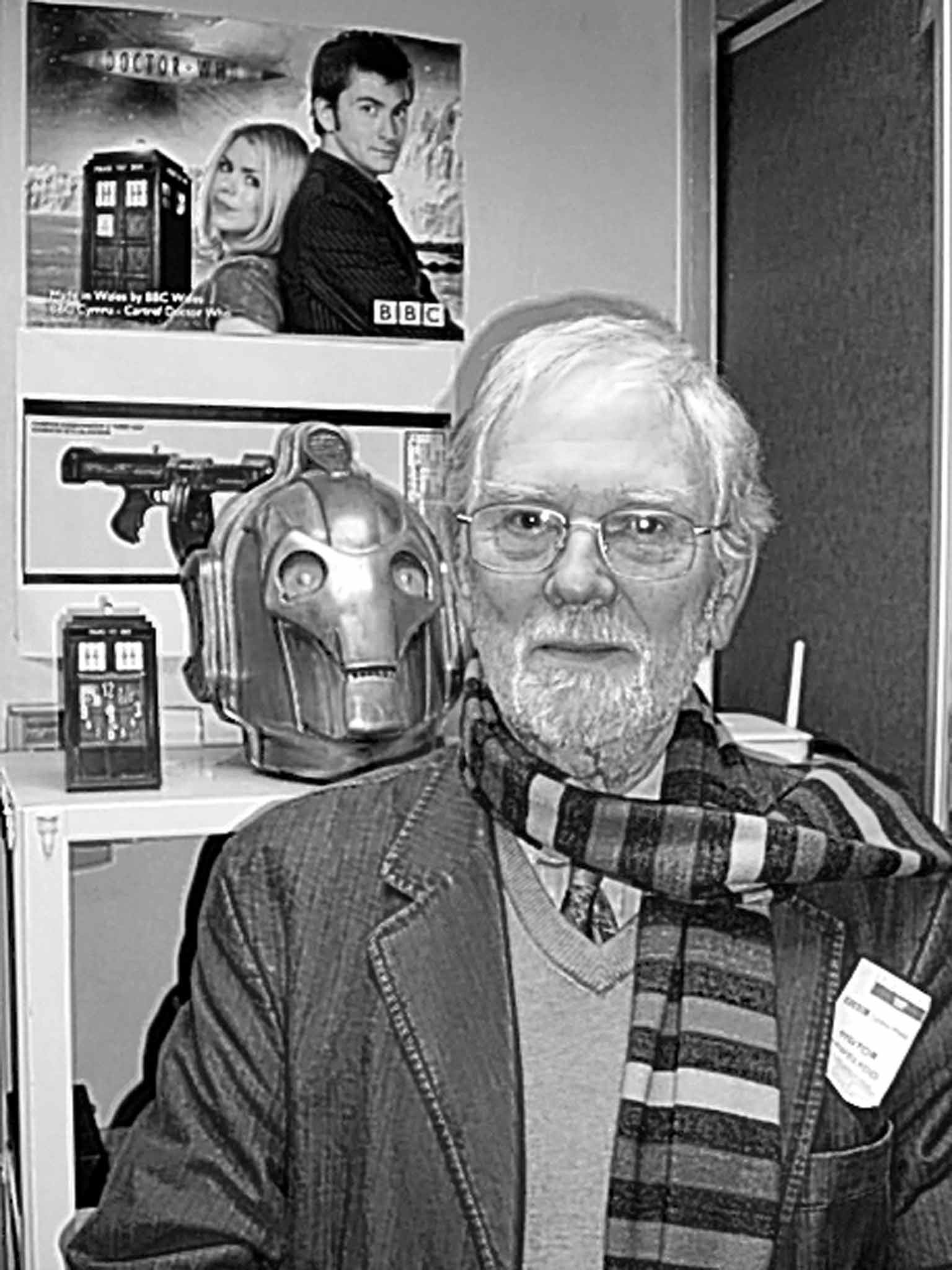Barry Newbery: Production designer who worked on 'Doctor Who' for more than 20 years with the first five Time Lords
He enthusiastically brought to life the court of Kubla Khan, the Aztec city of Tenochtitlan, the cities and deserts around Jaffa, Tombstone, Arizona, and Saxon England

The television production designer Barry Newbery worked on Doctor Who for most of its original 26-year run, from its first serialised story introducing the Gallifreyan Time Lord in 1963 to a 1984 tale merging a present-day English Civil War re-enactment with the real thing. He brought his talents to more episodes – 62 over 14 stories – than any other designer, creating sets for five incarnations of the Doctor, played by William Hartnell, Patrick Troughton, Jon Pertwee, Tom Baker and Peter Davison.
For the programme's first three years, Newbery alternated with Raymond Cusick, who had the distinction of designing the Daleks. He worked on many of the historical stories while Cusick, a history buff himself, was assigned to the sci-fi ones.
Newbery was originally drafted in to replace Peter Brachaki, who had designed the Tardis – the time-travel machine disguised as a police box – and other sets for Doctor Who's first episode, which began the four-part story "An Unearthly Child". Brachaki, who had never been keen to work on the programme, left after disagreements with producer Verity Lambert.
This gave Newbery the chance to indulge his love of history, designing caves and forests when Doctor Who and two of his granddaughter's teachers are whisked back in the Tardis to the Stone Age and meet a tribe of cave people. Over the next few years, he enthusiastically brought to life the court of Kubla Khan, the Aztec city of Tenochtitlan, the cities and deserts around Jaffa, Tombstone, Arizona, and Saxon England. "It was wonderful researching them," he said. "I learned quite a lot about the Aztecs that I would never have known otherwise. I didn't particularly want to do science-fiction."
Newbery also tweaked the Tardis and, in 1976, carried out its first significant redesign, making it shorter and wider on the outside and adding a secondary control room inside. One of his greatest skills on Doctor Who, between working on other productions, was creating on small budgets sets that looked good in front of the camera, without the luxury of making 3D models first.
Newbery was born in south London, the son of Reginald, an insurance seller, and his wife, Rosetta (née Garner), a hairdresser. He studied commercial art and electrical engineering at the Borough Polytechnic before doing National Service in the RAF (1945-47), working as a lorry mechanic in India.
He returned to the Polytechnic to train in fine art and, after labouring jobs, found work as a draughtsman and designer of shop window displays before spending two years designing exhibition stands at Olympia. This led him to join the BBC in 1957 as a design assistant.
His first work as a fully fledged production designer was on the 1962 wartime serial The Last Man Out (1963), about three British soldiers sent to Nazi-occupied France, and the sitcom pilot On the Knocker (1963), written by Harry Driver and Jack Rosenthal, and starring Ronald Fraser as an unconventional door-to-door sales rep.
Newbery's love of history was indulged in many of the BBC programmes on which he worked – The Count of Monte Cristo (1964), starring Alan Badel in an adaptation of the Dumas novel about adventure, romance and betrayal, Prince Regent (1979), chronicling George IV's life and earning the designer a Bafta nomination, The Critic (1982), Sheridan's theatre satire, and The Citadel (1983), based on AJ Cronin's novel about medical ethics in pre-NHS Britain.
He was particularly proud of his work on The Lost Boys (1978), writer Andrew Birkin's acclaimed three-part drama about the real-life relationship between Peter Pan creator JM Barrie (played by Ian Holm) and the Llewelyn Davies brothers, which won Newbery the Royal Television Society's Best Design award.
There were also episodes of The Shadow of the Tower (1972), Rosemary Anne Sisson's account of how Henry VII's reign set the stage for his son's Protestant Reformation, and When the Boat Comes In (1976), modern dramas such as Z Cars (1965-72), Softly Softly (1967-69), Paul Temple (1970-71) and The Expert (1971), and sitcoms Sykes (1974) and Dad's Army (1976).
Away from television, Newbery designed sets for amateur operatic productions. After taking early retirement from the BBC in 1984, he enjoyed painting landscapes in oils, pastels, watercolours and acrylics, and was a member of the Artists Society and Langham Sketching Club. The many on-set photographs he took while working on Doctor Who were published in his book The Barry Newbery Signature Collection in 2013.
His daughter Joanna worked as an assistant floor manager on the 1987 Doctor Who story "Time and the Rani" and became a television production executive. His elder daughter, Rachel, a retired teacher, is married to Francis Boyle, a television production designer. Newbery died of heart failure six weeks after his wife Zena's death.
Barry Reginald Newbery, television production designer: born London 10 February 1927; married 1951 Zena Clark (died 2015; two daughters); died London 25 February 2015.
Subscribe to Independent Premium to bookmark this article
Want to bookmark your favourite articles and stories to read or reference later? Start your Independent Premium subscription today.

Join our commenting forum
Join thought-provoking conversations, follow other Independent readers and see their replies